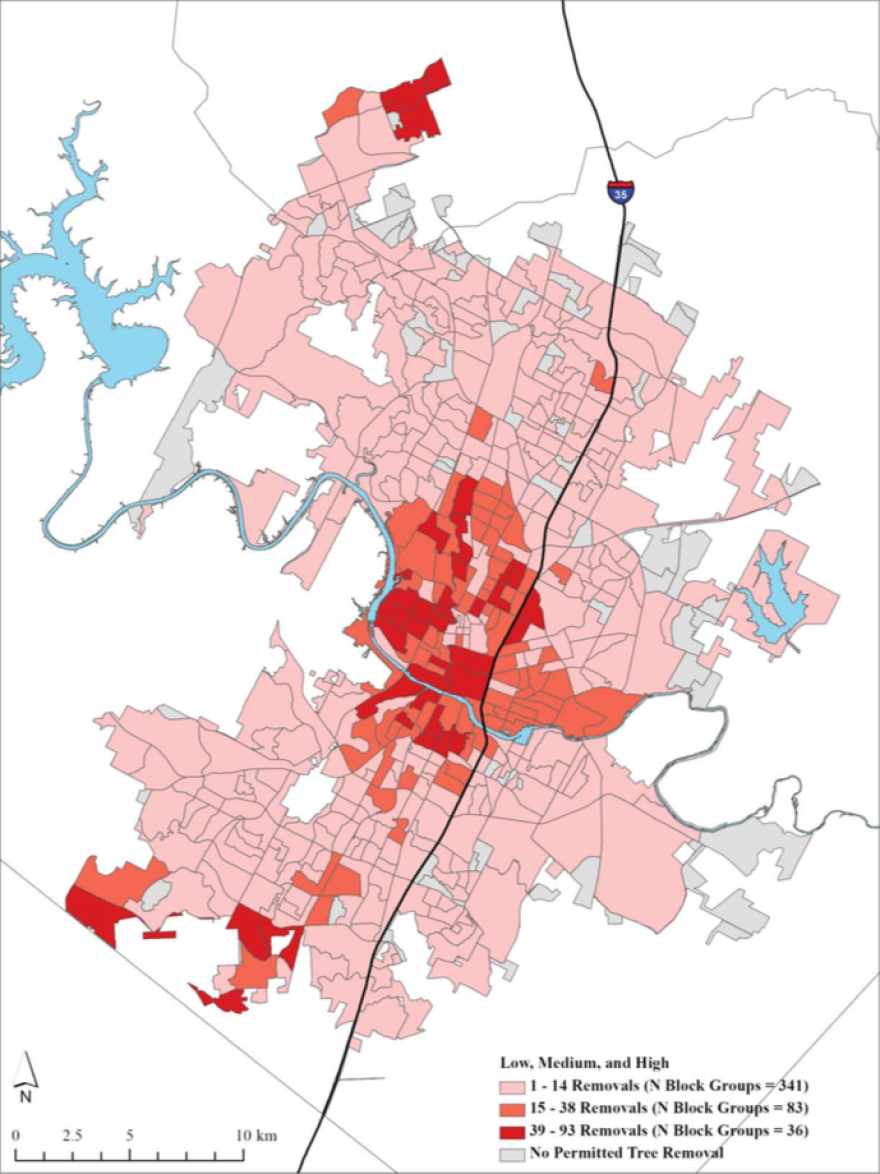When lawmakers meet in Austin later this summer for a special legislative session, Gov. Greg Abbott wants them to curb the ability of Texas cities to protect trees.
He's framed his directive as part of a larger effort to end "micromanaging" by liberal cities like Austin, but lost in that rhetoric is the relative popularity of tree ordinances in many Texas communities – and the actual impacts the rules have in cities and towns that institute them.
In an interview with Dallas-Fort Worth’s WBAP last week, the governor gave some background on why he wants the rules repealed.
He said he once wanted to cut down a pecan tree in his yard in Austin. After initially telling him not to kill the tree, the city charged him a permitting fee and asked him to replant trees to make up for the loss of the older one.
“In Austin, Texas, Austin, Texas, owns your trees," Abbott said. "It's socialistic."
The reality is there are about 60 Texas cities and towns that have tree-protection ordinances, and many of those towns lean conservative.
“From Paris to Edinburg; I think Abeline is another one,” says Brendan Lavy, a Texas State University graduate student who's been studying the rules. “They proliferate throughout the state, but mainly concentrate in faster-growing regions.”
According to a study Lavy wrote with Texas State geography professor Ron Hagelman, tree-preservation ordinances in Austin have had some surprising impacts.
In Austin, they say, 7,700 permits were submitted to remove or otherwise harm protected trees between 2002 and 2011. Only around 5 percent of those were denied outright; another 17 percent of permit applications were allowed to “close” without being resolved by the city.
When asked for numbers more recent than 2011, the City of Austin said even more tree removal permits had been granted in recent years, with only about 3 percent of requests from residential applicants denied.

“So, the idea that urban forestry regulations are in any kind of ubiquitous way causing people to not be allowed to cut trees down … none of the data bear this out at the moment,” Hagelman says.
One thing that surprised the researchers was where trees are removed with city approval.
Lavy and Hagelman say most tree removals during the period they studied took place in the urban core of Austin and on the outskirts. They speculate this is the result of redevelopment and infill building near downtown, as well as new development on the city's periphery.
Hagelman says the rules serve more to manage and monitor the urban forest than to safeguard individual trees.
If the rules are thrown out, he suspects more trees will be chopped down.
"But the bigger loss is the fact that, if you take away the regulations, you take away the city architecture and the funding associated with maintaining the urban forest," Hagelman says.
He mentions funding because it's federal government grants that pay for some of the very tree-preservation programs the state may restrict.
Texas Attorney General Ken Paxton may also weigh in. On Tuesday, state Sen. Donna Campbell (R-New Braunfels) asked for his opinion on whether local tree ordinances violate property rights guaranteed in the state constitution.



